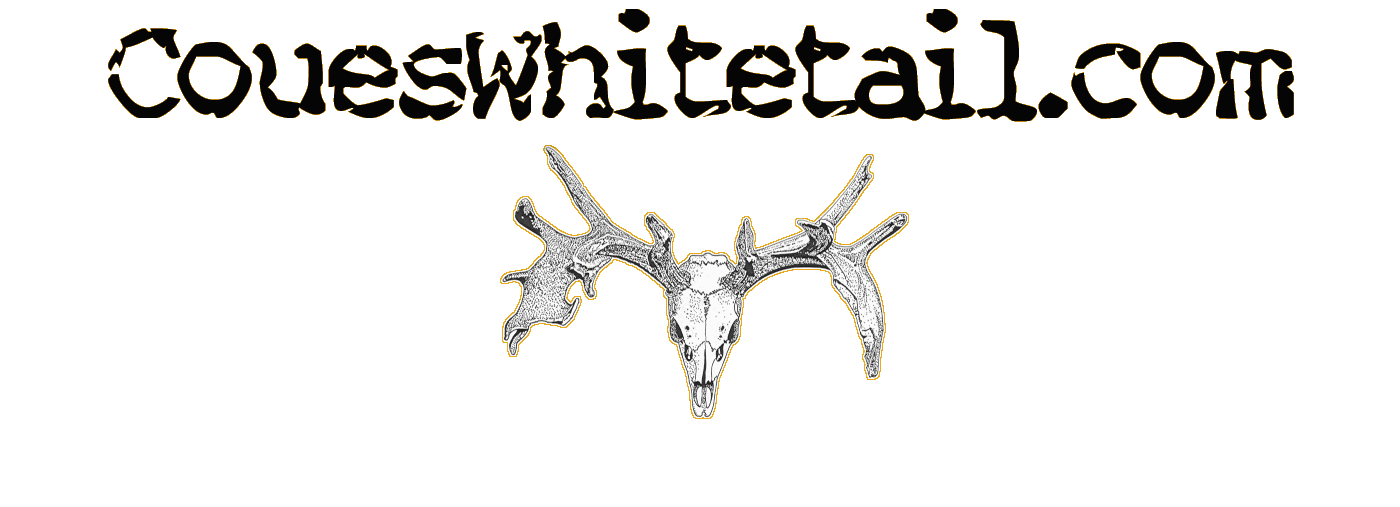

654321
Members-
Content Count
1,108 -
Joined
-
Last visited
-
Days Won
3
Content Type
Profiles
Forums
Calendar
Everything posted by 654321
-
Yes I bought my point after the draw since it is no longer an option during the draw
-
Had 11 and didn't get drawn
-
Yes, the AZGFD publishes 2 reports the bonus pass and the 1-2 pass, for example 8 resident points for archery elk in unit 1 last year didn't even make the bonus pass. I believe each applicant is only entered into the drawing 1 time. For example if you had 3 points going into the draw you would actually be assigned 4 random numbers and the lowest of the 4 would be then assigned to your application and entered into the draw.
-
I'm sitting on 12 pts. for WY.
-
Pretty simple, if your putting in by yourself match your points to the report, if putting in with a group add up groups points average them and match to report.
-
The AZGFD has them for free. I believe there are 50 fewer archery bull tags this year so that will change the odds a little
-
Born and raised in what used to be some of the best quail hunting in the state and I shoot quail on the ground from opening day until the last😂
-
Kudos to IA BORN for doing the right thing and calling G&F, It truly sounds like he was sorry for what happened and was willing to accept what the WM decided to do. Kudos to the WM who I'm sure went over the incident and asked the questions that needed to be asked and made the right call in my opinion. I personally feel like anybody involved in a similar situation shouldn't be able to go to auction though and be able to bid on their mistake. If the G&F didn't allow you to possibly get back a mistake then there would be no potential abuse of such a situation. Just my opinion.
-
Yesterday I witnessed from start to end a group of hunters in 5BN chasing a large group of elk, shooting from their vehicle as they are chasing the elk in their truck. The bull was hit yet they countinued to shoot counted about 15 shots total from 4 different hunters. Eventually we watched the bull go down, but this made me upset. Tried to get their plate number but was unable to. If you have a champ permit vehicle must be off road and definitely not moving when shooting from vehicle.
-
3 out of the 4 were self-inflicted
-
Ethics are usually a personal choice, example shooting animals over salt, shooting quail on the ground, ducks on water. Nothing illegal about any of those actions in AZ, but some people might have issue with it. What you witnessed above is flat out ILLEGAL at least 2 violations witnessed.
-
I would imagine the same way they do it for DUI checkpoints, the border patrol check stations that are a long ways from the border, ect. ect.
-
A few years back I was just about to Thatcher and was stopped at an ADOT enforcement check station, they were testing all diesels to make sure no one was running "red" fuel. Farm equipment was excluded.
-
You better check the road closures. Don't know how you plan on getting to 5B but I-17 is closed at the 179, 260 is closed at the Fossil Creek rd. 89A closed outside Sedona, 87 closed past Payson. Good luck
-

And were off to a rough start... 2019 Bison and Youth elk hunts
654321 replied to CatfishKev's topic in Buffalo Hunting
I'm curious when an animal is wounded on the last evening of the hunt do you have to call the AZGFD and ask them if you can recover the animal? What happens if you find the animal and it's not dead? -

Desert Zone Waterfowl Opens Oct. 18
654321 replied to Outdoor Writer's topic in Small Game, Upland Bird, and Waterfowl Hunting
No its the same stamp, the only difference is to hunt ducks you also need the federal duck stamp -
License Revocation (A.R.S. 17-340) Page 110 You can have your license privileges revoked by the Commission for up to five years for a conviction of: • unlawful taking, selling, offering for sale, bartering or possession of wildlife • careless use of firearms resulting in human injury or death • destroying or injuring livestock or crops while hunting or fishing • acts of vandalism or littering while hunting or fishing • knowingly allowing another person to use your big game tag • unlawful entry on to closed area for purposes of taking wildlife • unlawful posting of state or federal lands • license fraud • unlawful use of aircraft to take wildlife • waste of game meat • guiding without a license Additional convictions may result in license privileges being revoked for longer periods up to permanently. I don't believe shooting within 440 yards of occupied building is a revocable offense, and they can only revoke your license if your convicted. If your not convicted they cant revoke your license. They can however hit you with a civil penalty without a conviction
-
Unless it has changed AZGFD when assessing civil penalties considers an elk with 6 points or more a "trophy" which carries an automatic $8,000 fine regardless if it is a 240" bull or 400+
-
Actual Bonus Point Reports Below, are the individual Bonus Point Reports by draw, species and hunt, and the total bonus point report by species. Individual Bonus Totals by Species – Updated 8-29-2019. Shows Individual Bonus Points by species and whether a resident or non-resident. The following 12 reports show bonus point results and next draw pools based only on those applicants in the most recent drawing using Group Bonus Points. 2019 Fall Draw Bonus Point Reports Deer, Turkey, Javelina, Bighorn Sheep, Buffalo Fall Draw – Bonus Point Report – Bonus Pass by Genus.pdf – 20% Bonus Pass of Draw at the Species level. Fall Draw – Bonus Point Report – 1-2 Pass by Genus.pdf – 1st and 2nd Choice Pass of the Draw at the Species level. Fall Draw – Bonus Point Report – Bonus Pass by Hunt Number.pdf – 20% Bonus Pass of Draw at the Hunt Number level. Fall Draw – Bonus Point Report – 1-2 Pass by Hunt Number.pdf – 1st and 2nd Choice Pass of the Draw at the Hunt Number level. 2019 Pronghorn and Elk Bonus Point Reports Pronghorn and Elk – Bonus Point Report – Bonus Pass by Genus.pdf – 20% Bonus Pass of Draw at the Species level. Pronghorn and Elk – Bonus Point Report – 1-2 Pass by Genus.pdf – 1st and 2nd Choice Pass of the Draw at the Species level. Pronghorn and Elk – Bonus Point Report – Bonus Pass by Hunt Number.pdf – 20% Bonus Pass of Draw at the Hunt Number level. Pronghorn and Elk – Bonus Point Report – 1-2 Pass by Hunt Number.pdf – 1st and 2nd Choice Pass of the Draw at the Hunt Number level. 2019 Spring Draw Bonus Point Reports Spring Turkey, Javelina, Buffalo, Bear Spring – Bonus Point Report – Bonus Pass by Genus – 20% Bonus Pass of Draw at the Species level. Spring – Bonus Point Report – 1-2 Pass by Genus – 1st and 2nd Choice Pass of the Draw at the Species level. Spring – Bonus Point Report – Bonus Pass by Hunt Number – 20% Bonus Pass of Draw at the Hunt Number level. Spring – Bonus Point Report – 1-2 Pass by Hunt Number – 1st and 2nd Choice Pass of the Draw at the Hunt Number level. Group Bonus Points: refer to the above section titled “What are Group Bonus Points?” Hunt Number: refer to Arizona Hunt Regulation/Draw booklet that matches the year of this report in the Report Title for the Unit the Hunt Number applies to. 1st and 2nd Choices – indicates how many hunters chose that hunt number as their first hunt choice and how may chose it as their second hunt choice. From the AZGFD webpage
-
For me the best source of draw odds are the draw reports the AZGFD puts out
-
Yes they still do creel surveys, they us summer interns
-
I'm curious how many BP agents on any given day are assigned to the area lets say from Nogales to Sasabee? 1, 10, 50, 100? I can tell you there is 1 WM assigned to all of 36B&C. I have been hunting 36B on and off for the last 20 years and in that time once I get 10 yards from my truck I can count on one hand the number of times I have run into a BP agent in the field, the same can be said for the WM. On every hunt I have been on in 36B at some point I can guarantee you I will glass up or run into UDA's. Enforcement really???
-
Just a guess but maybe it has to do with population size? More mule deer compared to whitetail.
-
It seems to me that they did ban all out of state cervid animal parts that may be responsible for the spread of CWD. They just went the extra step adding velvet.
-
👍 After reading that document I mentioned it just seems the AZGFD isn't reinventing the wheel when it comes to CWD management they're basically falling the exact same guidelines as a lot of other states. I know if I was the one tasked with disease detection, management and spread for the department I would probably error on the side of caution.

